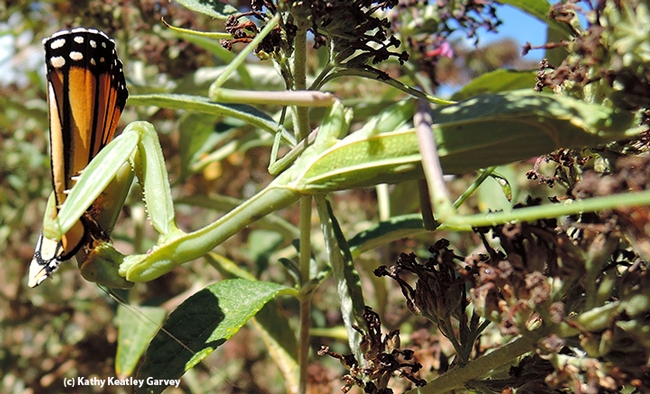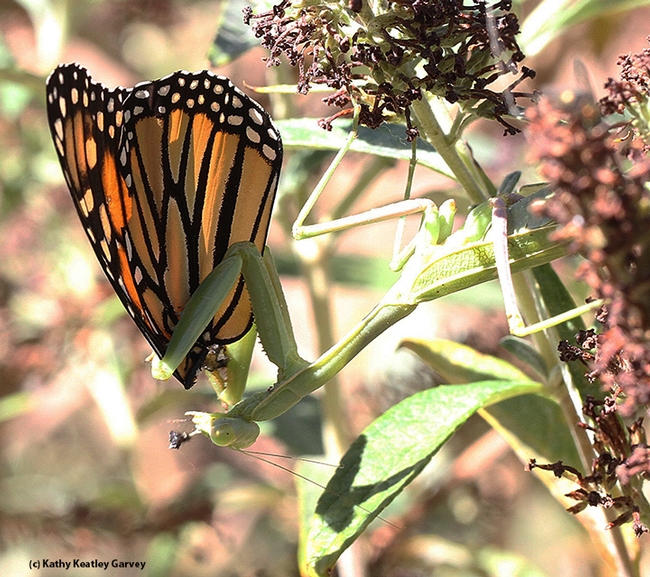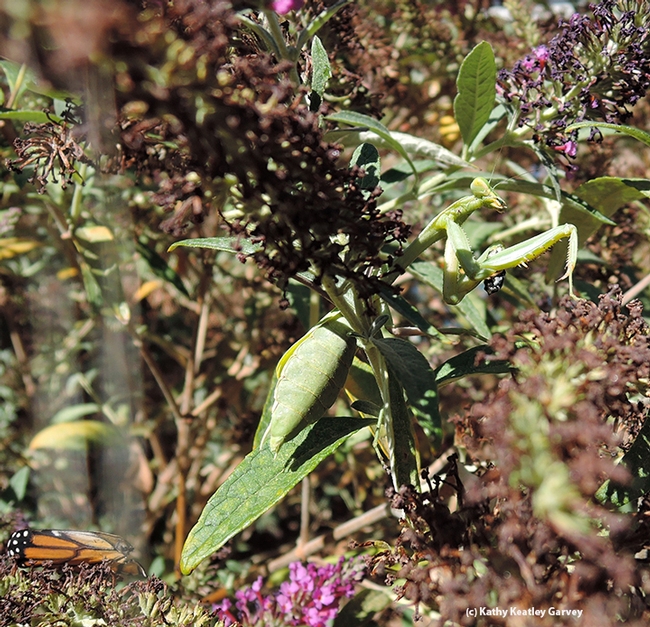It's a sin to kill a mockingbird, wrote Pulitzer Prize-winning author Harper Lee in her classic novel, "To Kill a Mockingbird."
"Mockingbirds don't do one thing except make music for us to enjoy," one of her characters, Miss Maudie, wisely observed. "They don't eat up people's gardens, don't nest in corn cribs, they don't do one thing but sing their hearts out for us. That's why it's a sin to kill a mockingbird."
Harper Lee's work came to mind yesterday when we saw a praying mantis devouring a monarch butterfly on our butterfly bush, located next to several milkweed plants. We watched the clipped monarch wings flutter down and land among the leaves.
It was a female monarch. She may have stopped to sip some nectar during her egg-laying mission. The hungry predator ambushed her.
The shock of seeing a delicate monarch gripped between spiked forelegs stuns you, especially when you've just reared two monarchs and have two more to go.
"Umm, do you mind?" we wanted to ask the mantis. "Please eat the cabbage white butterflies, stink bugs and aphids, not the monarchs."
Praying mantids are considered beneficial insects, but all we've seen them eat are honey bees, sunflower bees, butterflies and an occasional Gulf Fritillary caterpillar. However, they do eat ants, wasps, flies, and moths, as well. The larger praying mantids prey on hummingbirds.
The Xerces Society for Invertebrate Conservation summed up the monarch decline well on its website: "Monarch butterflies (Danaus plexippus) of North America are renowned for their long-distance seasonal migration and spectacular winter gatherings in Mexico and California. The monarch butterfly population has recently declined to dangerously low levels. In the 1990s, estimates of up to one billion monarchs made the epic flight each fall from the northern plains of the U.S. and Canada to sites in the oyamel fir forests north of Mexico City, and more than one million monarchs overwintered in forested groves on the California Coast. Now, researchers and citizen scientists estimate that only about 56.5 million monarchs remain, representing a decline of more than 80% from the 21 year average across North America."
Okay, praying mantis. We know. It was only one. You have to eat, too. You needed the protein to lay your ootheca. But have you ever considered how tasty and prevalent cabbage white butterflies are?
Attached Images:


